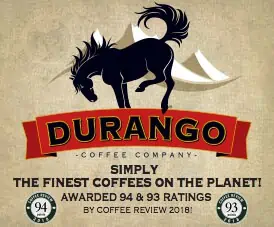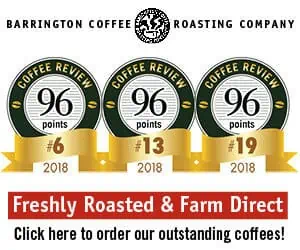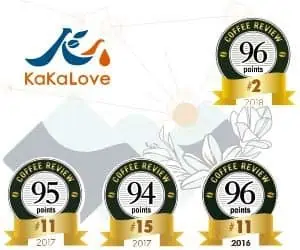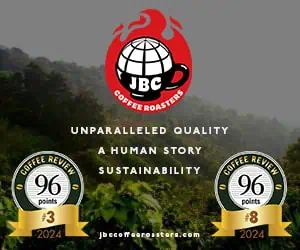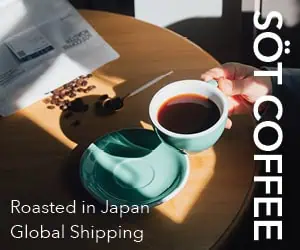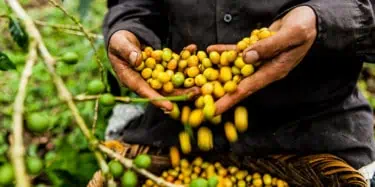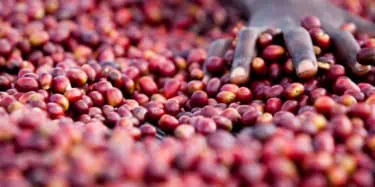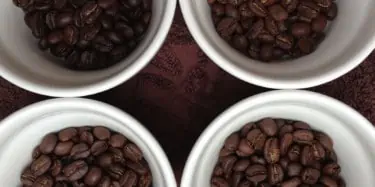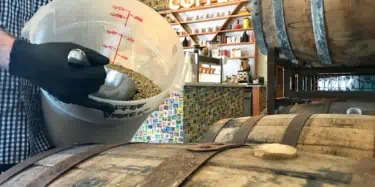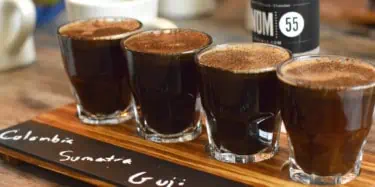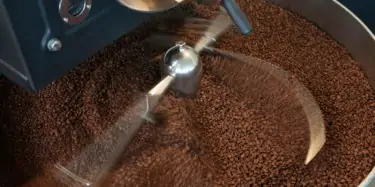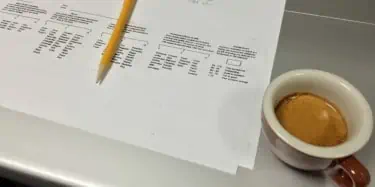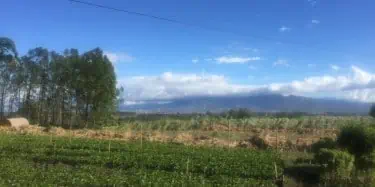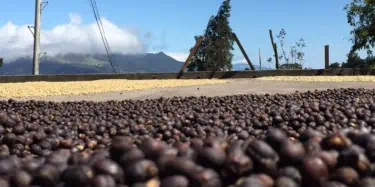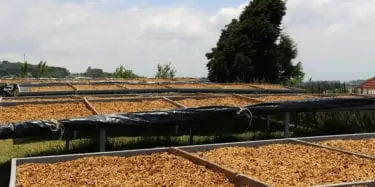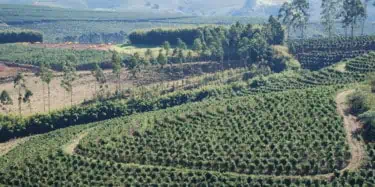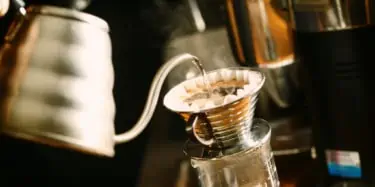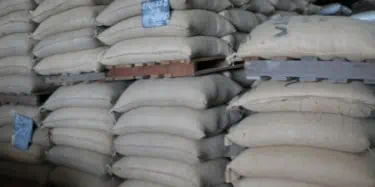When we first reported on coffees from Nicaragua, in 2004, the overarching theme was economic development. Specialty coffee was viewed as a way of opening access to economic and social benefits for Nicaragua’s many small- to medium-holding coffee farmers, most of whom had been decimated by the global drop in coffee prices during 1999-2003, and prior to that, by the long war that isolated the
Tasting Reports – Most Recent
Coffee Review has published more than 250 monthly coffee tasting reports since February 1997. The most recent tasting reports appear below in reverse chronological order. You may narrow your search by category from the main navigation drop-downs or by using the key word search feature that appears in the page header. The content in tasting reports and associated reviews was correct at the time of publication but may not remain accurate over time.
Gesha Coffees 2017: Still Pricey, Still Amazing
I was at one of the Specialty Coffee Association’s Re:co Symposia a couple of years ago, where Jay Ruskey of Goodlands Organic, the pioneer of California coffee-growing, was displaying fresh branches of two varieties of coffee trees at his table outside the meeting rooms. Some of the branches were from the respected mainstream Caturra coffee variety, which is producing some very nice coffees on
Darker-Roasted Coffees: Confessions and Amends
Those readers sensitive to language and to shifting, overlapping tastes in the coffee world may have noticed the nuance in the title of this report: “darker-roasted” coffees rather than “dark-roasted.” When titling this report we wanted to avoid encouraging a polarization between those coffee drinkers who prefer at least a little (perhaps a lot) of the bittersweet pungency promoted by darker
Holding Up (More Than) Half The Sky: Coffees From Women Producers
Mao Zedong’s famous statement that “women hold up half the sky” became central to the zeitgeist of the Western feminist movement of the 1960s and ‘70s, when identity politics began to foreground the plight of women—economically, socially and politically—both in the U.S. and abroad. Regardless of one’s position on the merits of focusing on gender-based affiliations versus shared values as tools for
Aged, Casked and Cured: Innovations in Green Coffee Conditioning
Green, unroasted coffee beans are porous and absorbent. As anyone in the industry knows from painful experience, green beans easily pick up odors from almost anything in their environment — paints stenciled on coffee bags, for example, concrete floors, petroleum residue in shipping containers, cardamom stored in the same warehouse. But where there is a problem there also may be an opportunity.
Exploring Roasters in the American Southwest
For Coffee Review’s monthly tasting reports we typically focus on coffee-producing countries or regions, or certain tree varieties or processing methods, or innovations that arise from the creativity of today’s specialty coffee world. It’s less often that we look at roasters, collectively, by geographical location. But this month we decided to focus on roasters of the Southwestern United States,
New Roasting Companies Carry the Third-Wave Torch
According to Global Exchange, an international human rights organization based in San Francisco, there are more than 1,200 coffee roasters in the U.S. Aside from the consumer who ultimately purchases, brews and drinks coffee, the coffee roaster is the end of the line in a complex supply chain that involves tens of millions of people, including producers in 50 coffee-growing countries; those who
Top 30 Coffees of 2016
We are pleased to present our list of the Top 30 Coffees of 2016, Coffee Review’s fourth annual ranking of the most exciting coffees we reviewed over the course of the past year. In 2016, we cupped thousands of samples and published nearly 400 coffee reviews. Approximately 90 of the reviewed coffees scored 94 points or higher. Obviously, all coffees earning scores of 94 points or more are
Holiday Gift Coffees 2016
At the end of each year, we ask roasters for coffees they are offering consumers as special holiday selections, whether blends they have composed specifically to commemorate the holidays or single-origin coffees considered special in some way — perhaps because of limited availability, relative rarity or unusual quality. This year, we received 35 samples, ranging from small-production, quite
New-World Espressos: Single-Origin Espressos from the Americas
We were not sure what to expect when we scheduled this month’s tasting of single-origin espressos from coffees grown in the New World (meaning coffees from the Americas rather than from Africa or the Pacific). Would we receive a run of light-roasted, brightly acidy, perhaps sharp espressos of the style that seems to have become fashionable over the past few years among some smaller, leading-edge
Costa Rica 2016: Innovation and Success in a Changing Market
It has been more than a decade since Coffee Review explored Costa Rica coffees in depth, though we cup many individual samples each year from this small, coffee-celebrated Central American country. In the last year alone, we reviewed 26 Costa Rica coffees at ratings of 91 to 96, including one, Temple Coffee’s Costa Rica Alberto Guardia Venecia Honey (94), which landed at the #17 spot on our 2015
Beyond the Review: Celebrating Coffees in Depth
This is not your typical Coffee Review tasting report. In fact, it is something of an unplanned improvisation. We originally had scheduled a tasting report on coffees of Costa Rica this month, but we decided to postpone it until next month, October. It turned out that Costa Ricas were slow to arrive in roasters’ warehouses this crop year, and we feared that if we rushed the article we would miss
Honey-Processed Coffees: Quiet Adventure
Honey coffee, honey-processing – what wonderful coffee language! It’s a language that sells (after all, most of us like honey), but it sells honestly. I can’t think of a better descriptor than “honey” for a process in which coffee beans are dried with the sticky-sweet, golden layer of fruit flesh still clinging to them, rather dried after the fruit flesh has been completely removed as it is in the
Learning from Sumatras
I’ve been cupping coffee professionally for less than a year. Ken Davids first hired me at Coffee Review last August, given that my background in food and wine writing, as well as in academia, seemed a good enough calling card to dip into the world of coffee. But, of course, in order to properly do this work, I would need to be trained in cupping, the rigorous sensory evaluation of coffee. While
Some Single-Origin Coffees from Australian Roasters
Over the last several decades Australia has developed a particularly vibrant specialty coffee scene. Cities seethe with cafés and café-goers. No consumer coffee events I’ve ever witnessed elsewhere have come close to the energy and sheer scale of Australian coffee festivals. And coffee in Australia continues to be appealingly local, as independent cafés considerably outnumber chain locations in
Brazil Naturals: Tradition Meets Trend
Although Coffee Review has published a number of articles over the years focusing on coffees from Brazil, we have never specifically focused on the coffee type generally called “Brazil naturals”: Brazil coffees of the Arabica species that have been dried inside the fruit rather than after the fruit has been removed (as is the case with conventional “washed” or wet-processed coffees). Brazil
When the Small Get Big (and the Big Try for Small)
We know them. These are the coffee roasting companies that made their reputations as innovative locally based roasters, and eventually came to model a new kind of coffee institution, one built around a revived intimacy between coffee and customer, precisely described high-end microlot coffees brought to dramatically light roasts, minimalist café interiors, free public cuppings, and pedagogical
Macro-Lots 2016: Everyday Coffees, High Ratings, Good Values
Many high-scoring coffees we cup at Coffee Review come from micro-lots: small, sometimes tiny, lots of green coffee from a single farm or cooperative, often produced from a single tree variety, and often processed in some special or distinctive way. Given how rare they are, these micro-lots are usually available to consumers for only a brief window of time. Such micro-lots also are typically more
Trolling the Supermarkets for Single-Origin Coffees
Every month Coffee Review publishes reviews of exceptional, often extraordinary single-origin coffees: green coffees produced in a single country, from a single crop, from a single farm or cooperative and, often, from a single variety of tree. These coffees are usually roasted and packaged by smaller roasting companies, however, so unless you happen to live in the immediate neighborhood of one of
Top 30 Coffees of 2015
We are pleased to present our Top 30 Coffees of 2015, Coffee Review’s third annual ranking of the most noteworthy coffees among those we reviewed over the past twelve months. In 2015, we cupped thousands of samples and published more than 300 coffee reviews. Approximately ninety of the reviewed coffees scored 94 points or higher. Obviously, all coffees earning scores of 94 points or more are

